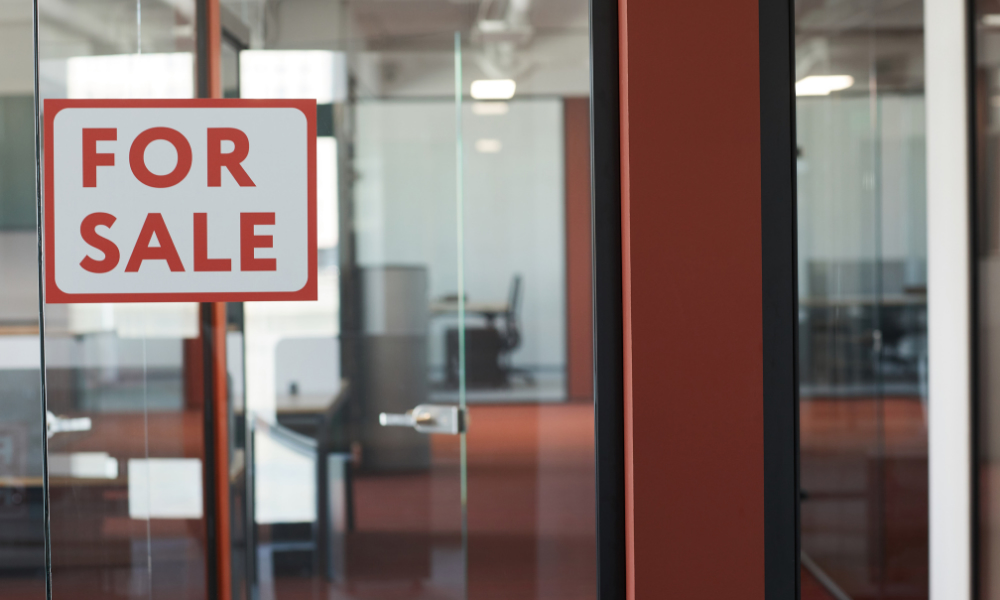Net absorption: what is it, how does it impact your real estate investments, and how should you calculate it? Commercial real estate is highly competitive, and there are a lot of factors that impact the market. Being able to navigate those elements ― including net absorption ― can be a huge difference maker in determining whether your investments are considered wildly successful or horrible and cash-heavy flops.
Do you know how to calculate the potential impact net absorption can have on your real estate investment? We’ve got the perfect guide to help ensure you get all the information you should know about this aspect of the space.
What is Net Absorption?
The net absorption rate represents the difference between the amount of physically occupied space tenants vacated during a certain time period and the office or commercial spaces they moved into within the same locality or time frame. It is measured by deducting the square footage vacated by tenants from the square footage occupied during the same term.

As a landlord or an investor in commercial real estate, you need a strong overall understanding of your net absorption rate. This can help you:
- Understand the difference between a buyer’s market and a seller’s market.
- Make critical buying and selling decisions.
- Set prices based on supply on demand.
- Determine when it’s time to start developing new properties or shifting them to commercial use.
Commercial real estate often relies on square footage rather than actual properties. These spaces often end up either split up or expanded based on absorption needs. Here is an example to keep in mind:
- In light of the COVID-19 pandemic and the shift to working from home, many businesses are finding they don’t need as much space as previously thought and are thus choosing to downsize.
- They have discovered that they need a smaller amount of space or fewer square feet than they previously assumed, or even than the previously needed.
- As a result, they may move into a smaller building or property, or smaller segments of an existing one.
- On the other hand, during periods of immense economic growth, many businesses will choose to increase their square footage to bring in new employees or handle increased foot traffic.
A look at net absorption can show you what commercial spaces are doing in your area. You may discover that you have high demand for smaller properties, for example, which means a positive net absorption or an increase in businesses moving into those properties. This may enable you to set higher rental prices or sales prices on commercial property without impacting demand.
On the other hand, if you notice consistent vacancies and a negative net absorption rate, you may need to adjust pricing or consider the layout of your available properties.
How to Calculate Net Absorption
Calculating net absorption of commercial real estate investment property starts with a solid understanding of your local area. You may choose to calculate that of a specific set of properties that you own or to calculate the full net absorption of the overall market, depending on your needs.
1. Evaluate the total square feet available on the market.
If you’re looking at a specific property, like a shopping center, you may want to consider the total stores available in the center that can be leased to tenants as well as the total space available. If you’re looking at a wider geographic area, like a specific neighborhood or city, you may want to consider the total square footage available for occupancy in the whole area.
2. Calculate the unoccupied/vacant square footage.
This includes any properties not being utilized as well as underutilized portions of existing properties. For example, a business that chooses to rent out only half of an available commercial property has half a commercial property vacant. This could equate to unnecessary expenses if the space is not occupied by or leased to a current paying tenant for a period of time.
3. Subtract the unoccupied square footage from the total available square footage.
With this method, you can quickly see what the net absorption of a specific market looks like. This also gives you information on potential leasing rates, vacated properties that are not physically tenanted and could represent future investment in a new space, construction costs required to create opportunities for occupancy, and other data that would help your company calculate available market moves for income each year.
Keeping an eye on the factors that lead to positive net absorption and negative net absorption can take this process to a new level, ensuring your commercial real estate investments are in keeping with market trends and that your business is able to adjust based on the information available.
What Impacts Net Absorption?
The truth is that, like the rest of the commercial and residential real estate spaces, net absorption can be impacted by a variety of factors. Here’s what you need to know about the most impactful ones influencing the market.
- Pricing
In many markets, pricing can have a strong impact on net absorption. Most businesses want to lease to landlords with commercial real estate spaces that fit their needs as well as possible while paying as little as possible. High rent rates can lead to businesses adapting to smaller spaces, thereby leading to an investor’s investment property remaining vacant instead of becoming occupied space.
- Changing Business Processes
The shift to remote work has caused many companies to need smaller spaces in order to conduct usual business practices. COVID-19 has led to an increased number of workers completing their job duties from home, for example, which may lead to more long-term available flexibility for the workforce in the year or years to come. Many businesses are now looking into permanent transitions to remote work, especially as they have experienced those advantages. As a result, they may need less space in the commercial market.
- Economic Conditions
In a thriving economy, more business owners open and expand their companies and thus need additional total space to be effective in their roles. They need places to operate, including commercial offices, stores, storage solutions, and factories, among other spaces.

During times of economic struggle and crisis, on the other hand, net absorption rates may decrease as fewer people choose to start new businesses or expand existing businesses ― even those that are thriving ― choose not to expand to help cut overall costs.
- Availability
In areas with little commercial availability, new businesses may quickly move into any space vacated by another entity. That means new properties fill fast as they are built or open up. In areas with wide availability, on the other hand, you may see lower net absorption rates due to the availability of additional competition. Paying attention to construction in your area can help you better evaluate overall availability and make decisions about your investments based on future changes as well as current conditions.
Trust Your Strategy to Commercial Real Estate Investment Experts
Whether you’re new to commercial real estate investing or want to expand your existing portfolio, a strong understanding of net absorption can help you make many critical buying and selling decisions and improve your ability to manage your investments. There are also numerous factors that can impact your investment decisions, making it nearly impossible to keep up with every detail you’d need to know to ensure you’re getting the biggest bang for your investment buck.
Working with an expert can influence those decisions and put you in a better position to understand the value of your investments, how much you can safely lease your properties for, and how to effectively utilize your commercial real estate for the best possible overall return. Contact The Genau Group today to speak with an expert about any net absorption questions you might have.






